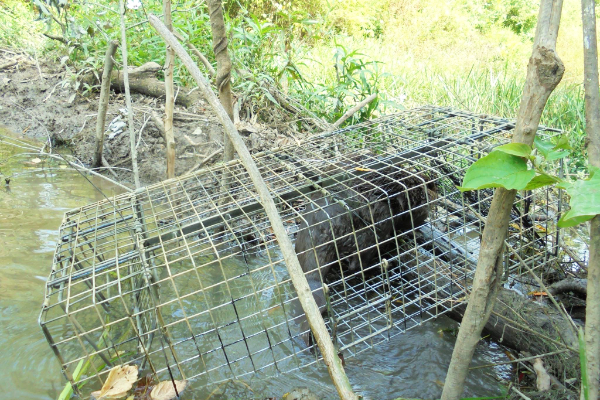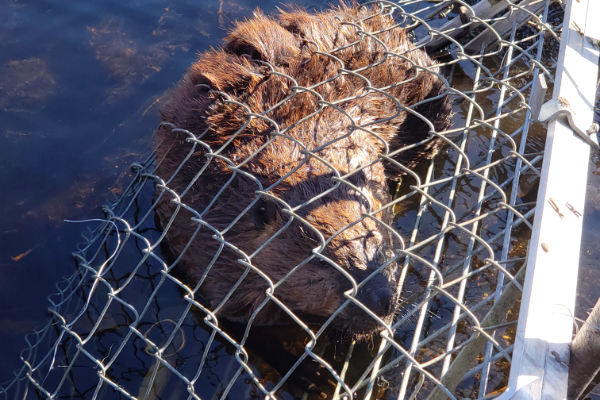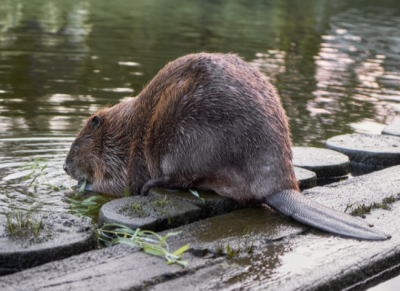How to get Beavers out of your stream or river?

Beavers are lovely but destructive animals when it comes to altering an environment. They are famously known for being the largest rodent in North America and the builders of wooden dams. Sadly, this strange creature can often be a pest to humans by changing the landscape and causing flooding in areas of housing. If you are having trouble with beavers read on for information on how to remove them safely.
Why do Beavers pose a problem by living in your stream or river?
Beavers that build dams and lodges on streams and rivers can sometimes cause flooding in undesirable areas (such as homes and gardens). Their structures can also disrupt the natural flow of water and cause damage to boats. Unlike streams, rivers that pass through your private land are owned by the state so you may not legally be allowed to remove the beavers. You must always make sure you are within your right to remove any animal from your land.
Contacting a professional vs removing them yourself
You first must determine whether you are going to contact a professional to remove the beavers or if you are going to attempt their removal yourself. If you would prefer a professional to handle the situation call your local wildlife advisors and look up wildlife removal services in your area. If you choose to take care of the removal yourself carry on reading for advice on how to do it safely.
How many Beavers do you need to remove?
Figure out how many beavers are living in your stream or river. They most commonly live in familial groups, so it is likely you will need to remove more than one. Once you know how many beavers you are dealing with you will be able to purchase the correct amount of equipment to remove them.
Trapping

Some states require you to be in possession of a special license to trap beavers. It is vital you check before trapping as you could end up in some serious legal trouble.
There are two main types of traps to consider:
Live traps: This is the kinder and more humane option. It allows the beavers to be caught and then relocated and released to an area where they will not pose as pests. Beavers are large, weighing in at an average of 11-32 kg, so you will need to buy a big live trap, such as a cage or a clamshell trap.
Lethal traps: As suggested in the name, these traps are lethal to animals. When activated these traps will immobilize and kill the captured beaver. However, lethal traps, such as snares and drowning body grips, cause the beavers to suffer.
Be aware that beavers are very intelligent and trap shy, making them hard to catch. It’s wise to research your chosen trap and be sure to set it in an area that the beaver treads often, checking it frequently. You also need to consider what bait you are going to use in the traps. The most effective bait is the castor oil (a scented urine-like substance) of another beaver. They are highly territorial and will investigate if they believe there is a trespasser on their territory.
Consider whether the beavers are causing any problems on your land before removing them. If not, it is better for the environment if they are left alone as they are known as keystone species, supporting the local ecosystems and improving water quality.

